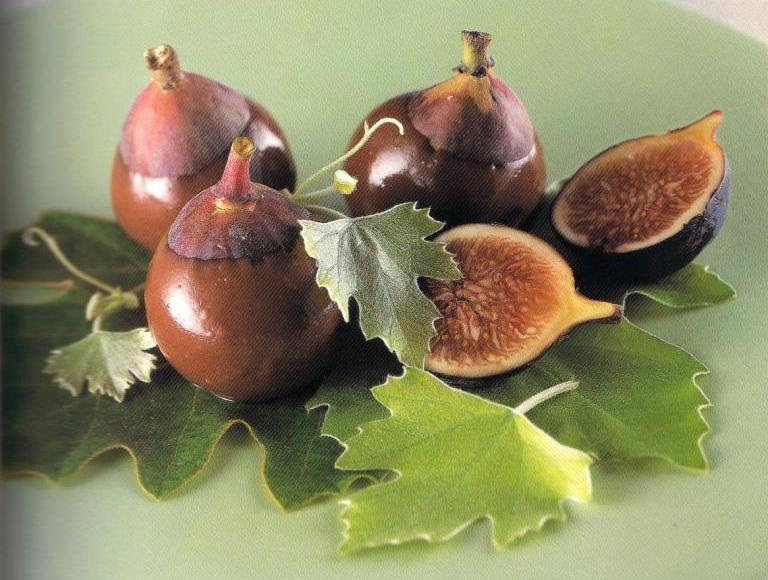 Fresh Figs in Nightgowns
On one of the hottest days of the year, in my air-conditionless pantry, my Nutella (chocolate-hazelnut spread) had become the consistency of molten chocolate. As it is quite sweet, I mixed it with yogurt, and one by one dipped a whole basket of fleshy purple figs into the mixture. I placed them in the refrigerator, whereupon the coating firmed up to make a very seductive dessert. My husband named them. Almost all of the fresh figs grown in the U.S. come from California.
Fresh Figs in Nightgowns
On one of the hottest days of the year, in my air-conditionless pantry, my Nutella (chocolate-hazelnut spread) had become the consistency of molten chocolate. As it is quite sweet, I mixed it with yogurt, and one by one dipped a whole basket of fleshy purple figs into the mixture. I placed them in the refrigerator, whereupon the coating firmed up to make a very seductive dessert. My husband named them. Almost all of the fresh figs grown in the U.S. come from California.
12 large ripe purple fresh figs 1 cup Nutella 1-1/2 cups plain yogurt Wash figs and pat dry. Set aside. Put Nutella in a warm place so that it is easy to spoon. Or place the jar in a bowl of very hot water. Spoon yogurt into a clean bowl. Whisk in 1 cup Nutella until completely smooth. One by one, dip each fig into the mixture, holding it by its stem. Cover each fig completely or almost completely with a thin coating. Place on a large plate lined with waxed paper. Refrigerate until very cold. Serve with a few tablespoons of plain yogurt alongside. Present on fresh fig, grape or lemon leaves. Serve immediately with a fork and a knife. Serves 4
Fresh Figs & Shaved Halvah with Warm Honey Syrup Here's an unorthodox but compelling combo of luscious fresh figs and thin slices of nutty halvah, a dense confection that resembles, at times, shards of cheese. This dish offers a good opportunity to try an interesting variety of honey such as wild thyme, linden or leatherwood honey (from Australia.)
1/2 cup fragrant honey 12 ripe large black or green figs, or a combination 6-ounce chunk of pistachio, or other flavor, halvah handful of fresh red currants, chopped pistachios, or slivered spearmint
Combine the honey and 2 tablespoons water in a small saucepan and boil for 1 minute, stirring constantly. Remove from the heat and keep warm. Wash the figs and cut them in half, lengthwise. Arrange, cut side up, on 4 large plates. Cut the halvah into paper-thin slices. Drizzle the honey on the figs and scatter the halvah on and around the figs. Garnish with currants or nuts, or spearmint. Serves 4


